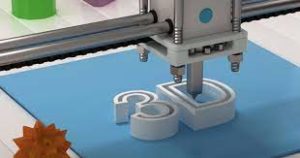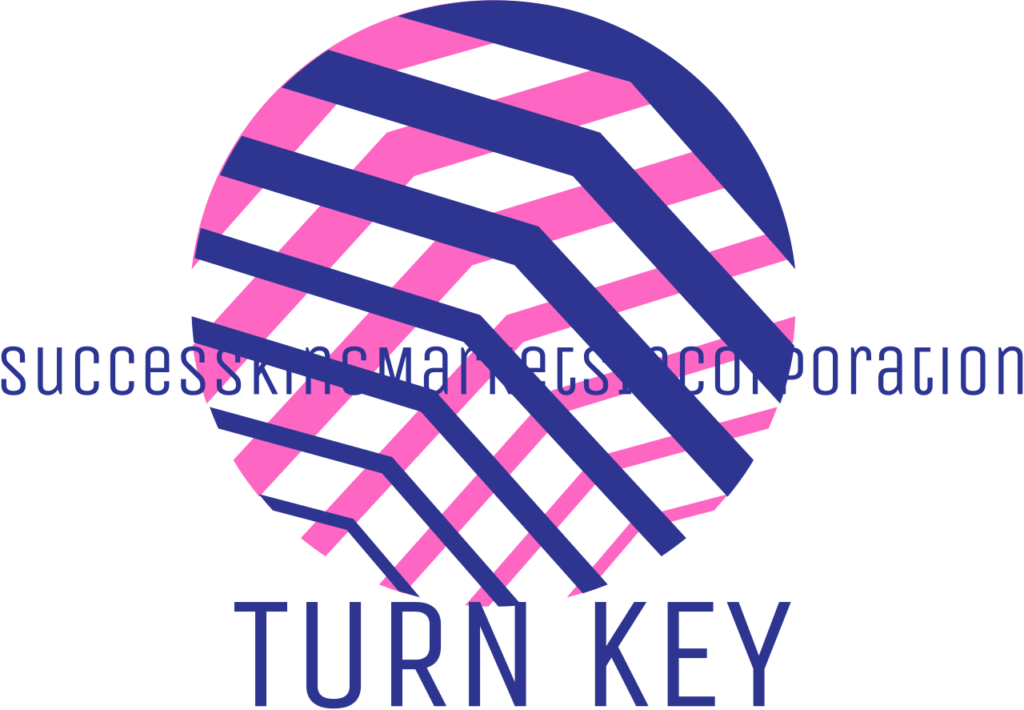
🖨️ Basics Of 3D Printing: A Complete Guide To How 3D Printing Works 🖨️
Introduction:
Welcome to our complete guide on 3D printing technology!
In this article, we will explore the basics of 3D printing, its various types, and how it can be a highly profitable career and business opportunity. Whether you’re a hobbyist, entrepreneur, or aspiring professional, understanding the fundamentals of 3D printing is essential in today’s rapidly evolving technological landscape.
🔍 How Does 3D Printing Work?
To comprehend the intricacies of 3D printing, it is important to grasp the underlying concept. 3D printing, also known as additive manufacturing, is a process that creates physical objects from a digital design. Unlike traditional manufacturing methods that involve subtracting or molding materials, 3D printing builds objects layer by layer, offering unique design possibilities.
The process of 3D printing involves several key steps:
1. Designing: The first step is to create a digital 3D model using computer-aided design (CAD) software. This model serves as the blueprint for the object you wish to print.
2. Slicing: The 3D model is then sliced into thin layers using specialized software. Each layer is assigned specific instructions for the 3D printer to follow.
3. Printing: The sliced model is sent to the 3D printer, which interprets the instructions and starts printing layer by layer. The printer deposits or solidifies the chosen material, such as plastic, metal, or even organic matter, to build the object.
4. Post-processing: Once the printing is complete, the object may require post-processing, such as removing support structures, sanding, or painting, to achieve the desired finish.
🏗️ Types of 3D Printing:
There are several types of 3D printing technologies available in the market, each with its unique printing quality and applications. Let’s explore a few prominent ones:
1. Fused Deposition Modeling (FDM): FDM is the most common and affordable 3D printing method. It works by extruding a filament of thermoplastic material, such as ABS or PLA, through a heated nozzle. FDM printers are widely used for prototyping, hobbyist projects, and functional parts.
2. Stereolithography (SLA): SLA printers use a liquid resin that is solidified layer by layer using a UV laser or projector. This technology produces highly detailed and smooth prints, making it ideal for applications in jewelry, dentistry, and engineering.
3. Selective Laser Sintering (SLS): SLS printers utilize a high-powered laser to selectively fuse powdered materials, such as nylon or metal, to create solid objects. SLS is known for its ability to produce complex geometries and functional prototypes.

💰 Profitability of 3D Printing:
Now, let’s delve into the potential profitability of 3D printing as a career and business venture. As the technology continues to advance and become more accessible, the demand for 3D printed products and services is rapidly increasing.
1. Prototyping and Product Development: 3D printing allows for rapid prototyping, enabling businesses to iterate and refine their designs quickly. This saves time and money in the product development process, making it an attractive option for companies across various industries.
2. Customization and Personalization: With 3D printing, customization and personalization of products have become easier than ever before. This opens up opportunities for niche markets and specialized products tailored to individual preferences.
3. Replacement Parts and Repairs: 3D printing provides a cost-effective solution for producing replacement parts for machinery, appliances, or even human body parts. This aspect of 3D printing can be highly profitable, especially in industries where downtime is costly.
4. Education and Training: As 3D printing becomes more prevalent, the demand for skilled professionals who can operate and maintain the technology is on the rise. Offering training programs and educational services related to 3D printing can be a lucrative business opportunity.
📈 Planning and Scaling for Profitability:
To ensure a highly profitable venture in 3D printing, consider the following tips:
1. Market Research: Identify the target market and understand the demand for 3D printed products or services. Conduct thorough market research to assess competition, pricing, and potential customers.
2. Specialization: Focus on a specific niche or industry where your expertise and 3D printing capabilities can add unique value. Specialization allows you to differentiate yourself from competitors and attract a loyal customer base.
3. Quality and Innovation: Strive for high-quality prints and invest in the latest 3D printing technologies to stay ahead of the curve. Embrace innovation and continuously explore new materials, techniques, and applications to offer cutting-edge solutions.
4. Collaborations and Partnerships: Forge strategic partnerships with designers, engineers, and businesses that can complement your 3D printing services. Collaborations can lead to joint ventures, shared resources, and expanded market reach.
5. Marketing and Branding: Develop a strong online presence through a professional website, social media platforms, and engaging content. Utilize search engine optimization (SEO) techniques, relevant keywords, and internal links to improve visibility and attract potential customers.
Conclusion:
As you can see, 3D printing technology offers immense potential for profitability as a career and business venture. By understanding the basics of 3D printing, exploring different printing types, and planning for scalability, you can position yourself for success in this rapidly growing industry. Embrace the possibilities, unleash your creativity, and embark on a journey towards a highly profitable 3D printing venture! 🚀
Keywords: 3D printing, additive manufacturing, profitable career, business opportunity, types of 3D printing, FDM, SLA, SLS, prototyping, customization, replacement parts, education, market research, specialization, quality, innovation, collaborations, marketing, branding.
Tags: #3Dprinting #additivemanufacturing #technology #businessopportunity #career #prototyping #customization #replacementparts #education #marketresearch #innovation #marketing #branding
🖨️ Basics Of 3D Printing: A Complete Guide To How 3D Printing Works 🖨️
Introduction:
Welcome to our complete guide on 3D printing technology! In this article, we will explore the basics of 3D printing, its various types, and how it can be a highly profitable career and business opportunity. Whether you’re a hobbyist, entrepreneur, or aspiring professional, understanding the fundamentals of 3D printing is essential in today’s rapidly evolving technological landscape.
🔍 How Does 3D Printing Work?
To comprehend the intricacies of 3D printing, it is important to grasp the underlying concept. 3D printing, also known as additive manufacturing, is a process that creates physical objects from a digital design. Unlike traditional manufacturing methods that involve subtracting or molding materials, 3D printing builds objects layer by layer, offering unique design possibilities.
The process of 3D printing involves several key steps:
1. Designing: The first step is to create a digital 3D model using computer-aided design (CAD) software. This model serves as the blueprint for the object you wish to print.
2. Slicing: The 3D model is then sliced into thin layers using specialized software. Each layer is assigned specific instructions for the 3D printer to follow.
3. Printing: The sliced model is sent to the 3D printer, which interprets the instructions and starts printing layer by layer. The printer deposits or solidifies the chosen material, such as plastic, metal, or even organic matter, to build the object.
4. Post-processing: Once the printing is complete, the object may require post-processing, such as removing support structures, sanding, or painting, to achieve the desired finish.
🏗️ Types of 3D Printing:
There are several types of 3D printing technologies available in the market, each with its unique printing quality and applications. Let’s explore a few prominent ones:
1. Fused Deposition Modeling (FDM): FDM is the most common and affordable 3D printing method. It works by extruding a filament of thermoplastic material, such as ABS or PLA, through a heated nozzle. FDM printers are widely used for prototyping, hobbyist projects, and functional parts.
2. Stereolithography (SLA): SLA printers use a liquid resin that is solidified layer by layer using a UV laser or projector. This technology produces highly detailed and smooth prints, making it ideal for applications in jewelry, dentistry, and engineering.
3. Selective Laser Sintering (SLS): SLS printers utilize a high-powered laser to selectively fuse powdered materials, such as nylon or metal, to create solid objects. SLS is known for its ability to produce complex geometries and functional prototypes.
💰 Profitability of 3D Printing:
Now, let’s delve into the potential profitability of 3D printing as a career and business venture. As the technology continues to advance and become more accessible, the demand for 3D printed products and services is rapidly increasing.
1. Prototyping and Product Development: 3D printing allows for rapid prototyping, enabling businesses to iterate and refine their designs quickly. This saves time and money in the product development process, making it an attractive option for companies across various industries.
2. Customization and Personalization: With 3D printing, customization and personalization of products have become easier than ever before. This opens up opportunities for niche markets and specialized products tailored to individual preferences.
3. Replacement Parts and Repairs: 3D printing provides a cost-effective solution for producing replacement parts for machinery, appliances, or even human body parts. This aspect of 3D printing can be highly profitable, especially in industries where downtime is costly.
4. Education and Training: As 3D printing becomes more prevalent, the demand for skilled professionals who can operate and maintain the technology is on the rise. Offering training programs and educational services related to 3D printing can be a lucrative business opportunity.
📈 Planning and Scaling for Profitability:
To ensure a highly profitable venture in 3D printing, consider the following tips:
1. Market Research: Identify the target market and understand the demand for 3D printed products or services. Conduct thorough market research to assess competition, pricing, and potential customers.
2. Specialization: Focus on a specific niche or industry where your expertise and 3D printing capabilities can add unique value. Specialization allows you to differentiate yourself from competitors and attract a loyal customer base.
3. Quality and Innovation: Strive for high-quality prints and invest in the latest 3D printing technologies to stay ahead of the curve. Embrace innovation and continuously explore new materials, techniques, and applications to offer cutting-edge solutions.
4. Collaborations and Partnerships: Forge strategic partnerships with designers, engineers, and businesses that can complement your 3D printing services. Collaborations can lead to joint ventures, shared resources, and expanded market reach.
5. Marketing and Branding: Develop a strong online presence through a professional website, social media platforms, and engaging content. Utilize search engine optimization (SEO) techniques, relevant keywords, and internal links to improve visibility and attract potential customers.
Conclusion:
As you can see, 3D printing technology offers immense potential for profitability as a career and business venture. By understanding the basics of 3D printing, exploring different printing types, and planning for scalability, you can position yourself for success in this rapidly growing industry. Embrace the possibilities, unleash your creativity, and embark on a journey towards a highly profitable 3D printing venture! 🚀
Keywords: 3D printing, additive manufacturing, profitable career, business opportunity, types of 3D printing, FDM, SLA, SLS, prototyping, customization, replacement parts, education, market research, specialization, quality, innovation, collaborations, marketing, branding.
Tags: #3Dprinting #additivemanufacturing #technology #businessopportunity #career #prototyping #customization #replacementparts #education #marketresearch #innovation #marketing #branding
Internal Links:
– Learn more about the different types of 3D printing technologies [
1. STL (Standard Tessellation Language): STL is the most widely used file format for 3D printing. It represents the surface geometry of a 3D object using a mesh of triangles. You can find STL models on various websites such as Thingiverse, MyMiniFactory, and Cults3D. Here is an example link to Thingiverse: https://www.thingiverse.com/
2. OBJ (Wavefront Object): OBJ files store both the geometry and texture information of a 3D model. They are commonly used for 3D printing and can be created in software like Blender or SketchUp. You can find OBJ models on websites like TurboSquid and CGTrader. Here is an example link to TurboSquid: https://www.turbosquid.com/
3. AMF (Additive Manufacturing File): AMF is an XML-based file format specifically designed for additive manufacturing. It supports more complex geometry and can store material properties. You can find AMF models on platforms like GrabCAD and 3D Warehouse. Here is an example link to GrabCAD: https://grabcad.com/
4. GCODE: GCODE is not a model file format, but rather a programming language that controls the movements of a 3D printer. It contains instructions such as the path, speed, and temperature for the printer to follow. GCODE files are generated from slicing software like Ultimaker Cura or PrusaSlicer.
Please note that the links provided are examples of websites where you can find 3D models, but there are many other websites and resources available for 3D printing models.
1. STL (Standard Tessellation Language): STL is the most widely used file format for 3D printing. It represents the surface geometry of a 3D object using a mesh of triangles. You can find STL models on various websites such as Thingiverse, MyMiniFactory, and Cults3D. Here is an example link to Thingiverse: https://www.thingiverse.com/
2. OBJ (Wavefront Object): OBJ files store both the geometry and texture information of a 3D model. They are commonly used for 3D printing and can be created in software like Blender or SketchUp. You can find OBJ models on websites like TurboSquid and CGTrader. Here is an example link to TurboSquid: https://www.turbosquid.com/
3. AMF (Additive Manufacturing File): AMF is an XML-based file format specifically designed for additive manufacturing. It supports more complex geometry and can store material properties. You can find AMF models on platforms like GrabCAD and 3D Warehouse. Here is an example link to GrabCAD: https://grabcad.com/
4. GCODE: GCODE is not a model file format, but rather a programming language that controls the movements of a 3D printer. It contains instructions such as the path, speed, and temperature for the printer to follow. GCODE files are generated from slicing software like Ultimaker Cura or PrusaSlicer.
Please note that the links provided are examples of websites where you can find 3D models, but there are many other websites and resources available for 3D printing models.]
– Discover the profitability of 3D printing in product development [link to section “
Here are some resources that provide information on the profitability of 3D printing:
1. “The Business of 3D Printing” by Sculpteo: This comprehensive guide covers various aspects of profitability in the 3D printing industry, including market trends, business models, cost analysis, and case studies. You can find it at: https://www.sculpteo.com/en/guides/business-of-3d-printing/
2. “The State of 3D Printing: 2020” by Sculpteo: This report provides insights into the current state of the 3D printing industry, including market growth, applications, and profitability. You can access it at: https://www.sculpteo.com/en/white-paper/state-of-3d-printing-2020/
3. “The Profitability of 3D Printing” by 3D Hubs: This article explores the financial aspects of 3D printing, including cost savings, revenue generation, and return on investment. You can read it here: https://www.3dhubs.com/knowledge-base/profitability-3d-printing/
4. “The Business of 3D Printing: How to Start a Successful 3D Printing Business” by All3DP: This guide provides practical tips and insights on starting and running a profitable 3D printing business, including pricing strategies, target markets, and revenue streams. You can find it at: https://all3dp.com/1/3d-printing-business-how-to-start/
5. “The Economics of 3D Printing” by Harvard Business Review: This article discusses the economic implications of 3D printing, including its impact on supply chains, manufacturing costs, and business models. You can access it here: https://hbr.org/2015/05/the-economics-of-3d-printing
Please note that while these resources provide valuable information on the profitability of 3D printing, it’s important to conduct thorough research and analysis specific to your business goals and industry before making any investment decisions.”]
– Explore the importance of market research in planning a profitable 3D printing venture [link to section “
you can use the provided resources and search within them to find the section on “Planning and Scaling for Profitability” or related information.
In general, when reading the articles or guides mentioned earlier, you can look for headings or subheadings that discuss planning and scaling for profitability. Additionally, You can use the search function (usually Ctrl+F or Command+F) within the webpage or document to search for specific keywords like “planning,” “scaling,” or “profitability” to locate relevant sections.]







You must be logged in to post a comment.